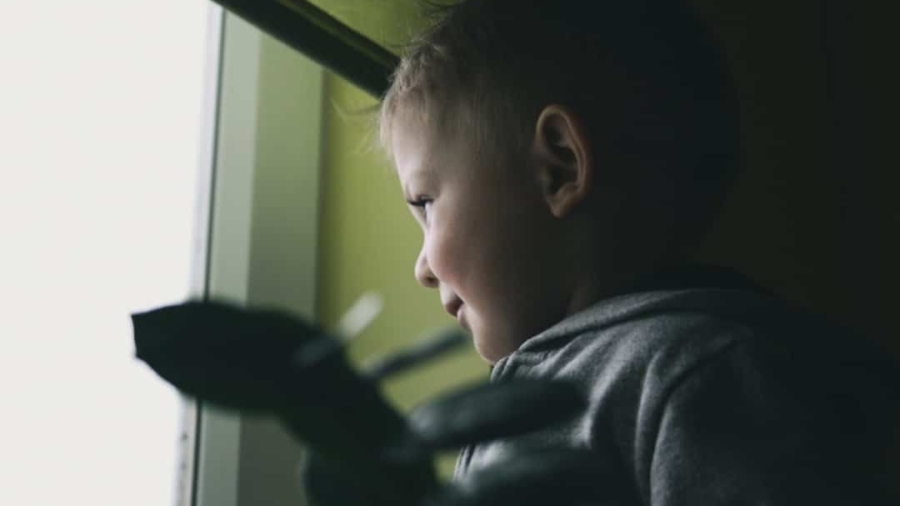In an increasingly digital world, the concept of data privacy has gained significant attention, particularly concerning children. As young users engage with various online platforms, from social media to educational apps, their personal information becomes vulnerable to misuse. Children, often unaware of the implications of sharing their data, are at a heightened risk of exploitation.
This reality necessitates a comprehensive understanding of children’s data privacy, which encompasses the collection, storage, and use of their personal information. The stakes are high; the consequences of inadequate protection can lead to identity theft, cyberbullying, and long-term psychological effects. The digital landscape is evolving rapidly, with children being introduced to technology at younger ages than ever before.
This early exposure raises critical questions about the adequacy of existing privacy measures and the ethical responsibilities of companies that cater to young audiences. As children navigate online environments, they often lack the maturity to comprehend the potential risks associated with their digital footprints. Therefore, it is imperative for stakeholders—including parents, educators, and policymakers—to advocate for robust data privacy protections tailored specifically for children.
Key Takeaways
- Children’s data privacy is a critical issue that requires attention and protection in the digital age.
- Data privacy impacts children’s safety, well-being, and development, making it essential to safeguard their personal information.
- Current challenges in protecting children’s data privacy include the lack of comprehensive regulations and the rapid advancement of technology.
- Legal and regulatory frameworks play a crucial role in ensuring children’s data privacy, but gaps and inconsistencies still exist.
- Technology can both pose risks and offer solutions for children’s data privacy, making it important to balance innovation with protection.
The Impact of Data Privacy on Children
The impact of data privacy breaches on children can be profound and multifaceted. When children’s personal information is compromised, it can lead to immediate consequences such as cyberbullying or unwanted contact from strangers. For instance, a child who shares their location on a social media platform may inadvertently expose themselves to dangerous situations.
Moreover, the psychological ramifications can be long-lasting; children may develop anxiety or distrust towards technology and online interactions if they experience or witness data misuse. Beyond immediate threats, the long-term implications of data privacy violations can shape a child’s future. Data collected during childhood can follow individuals into adulthood, influencing everything from college admissions to job opportunities.
For example, if a child’s online behavior is tracked and analyzed by algorithms, it could lead to biased conclusions about their character or capabilities. This phenomenon raises ethical concerns about how data-driven decisions can perpetuate stereotypes or limit opportunities for young individuals based on their digital history.
Current Challenges in Protecting Children’s Data Privacy

Despite growing awareness of the importance of children’s data privacy, several challenges persist in effectively safeguarding their information. One significant hurdle is the rapid pace of technological advancement, which often outstrips existing regulations and protective measures. As new platforms and applications emerge, they frequently lack adequate privacy safeguards tailored for younger users.
For instance, many popular gaming apps collect extensive data without clear consent mechanisms or age verification processes, leaving children vulnerable to exploitation. Another challenge lies in the complexity of privacy policies and terms of service agreements that accompany digital products. These documents are often lengthy and filled with legal jargon that is difficult for adults to understand, let alone children.
As a result, many young users may unknowingly agree to terms that allow companies to collect and share their data without fully comprehending the implications. This lack of transparency not only undermines informed consent but also highlights the need for more accessible and child-friendly privacy practices.
Legal and Regulatory Frameworks for Children’s Data Privacy
In response to growing concerns about children’s data privacy, various legal frameworks have been established to provide protections. One of the most significant pieces of legislation in this area is the Children’s Online Privacy Protection Act (COPPA), enacted in the United States in 1998. COPPA mandates that websites and online services directed at children under 13 must obtain verifiable parental consent before collecting personal information.
This law aims to empower parents while ensuring that children are not exploited by commercial interests. However, while COPPA has made strides in protecting children’s data privacy, it is not without its limitations. For instance, the law only applies to children under 13, leaving older minors without specific protections.
Additionally, enforcement can be challenging; many companies may attempt to circumvent regulations by misclassifying their target audience or failing to implement adequate age verification processes. As digital landscapes evolve, there is a pressing need for updated regulations that address the complexities of modern technology and provide comprehensive protections for all minors.
Technology and Children’s Data Privacy
The intersection of technology and children’s data privacy presents both opportunities and challenges. On one hand, advancements in technology can enhance privacy protections through innovative solutions such as encryption and anonymization techniques. For example, some applications now employ end-to-end encryption to safeguard communications between users, making it more difficult for unauthorized parties to access sensitive information.
Additionally, artificial intelligence can be leveraged to detect and mitigate potential privacy breaches in real-time. On the other hand, technology also poses significant risks to children’s data privacy. The proliferation of smart devices—ranging from smartphones to Internet of Things (IoT) gadgets—has created new avenues for data collection that often go unchecked.
For instance, smart toys that connect to the internet may collect audio recordings or location data without adequate safeguards in place. This raises critical questions about who owns this data and how it is used, emphasizing the need for stringent regulations that keep pace with technological advancements.
Best Practices for Protecting Children’s Data Privacy

To effectively protect children’s data privacy, several best practices should be adopted by parents, educators, and technology developers alike. First and foremost, fostering open communication between children and adults about online safety is essential. Parents should engage in discussions about the importance of privacy and guide their children in understanding what information is safe to share online.
This proactive approach empowers children to make informed decisions about their digital interactions. Moreover, technology developers must prioritize user-friendly privacy settings within their applications and platforms. By implementing clear consent mechanisms and providing straightforward explanations of data collection practices, companies can help users—especially children—understand their rights regarding personal information.
For instance, platforms could offer simplified privacy dashboards that allow users to easily manage their data preferences and opt-out options.
The Role of Parents and Educators in Children’s Data Privacy
Parents and educators play a crucial role in safeguarding children’s data privacy by serving as advocates and educators themselves. Parents should take an active interest in their children’s online activities by monitoring the apps they use and discussing potential risks associated with those platforms. By establishing guidelines for safe internet usage—such as setting time limits on screen time or encouraging the use of privacy-focused applications—parents can help mitigate risks while fostering responsible digital citizenship.
Educators also have a responsibility to incorporate lessons on digital literacy into their curricula. Teaching students about data privacy not only raises awareness but also equips them with essential skills for navigating an increasingly complex digital landscape. Schools can implement programs that focus on critical thinking regarding online content, encouraging students to question the motives behind data collection practices and understand their rights as digital citizens.
The Future of Children’s Data Privacy
As technology continues to evolve at an unprecedented pace, the future of children’s data privacy remains uncertain yet critical.
While these advancements hold promise for enhancing security measures, they also raise ethical concerns regarding surveillance and profiling of young users.
To address these challenges effectively, a collaborative approach involving policymakers, technology companies, parents, and educators will be essential. Ongoing dialogue about best practices and regulatory frameworks must adapt to keep pace with technological innovations while prioritizing children’s rights to privacy and safety online. As society grapples with these issues, it is imperative that we remain vigilant in our efforts to protect the most vulnerable members of our digital community—our children—ensuring they can navigate the online world safely and responsibly.
In the context of emphasizing the importance of children’s data privacy, it’s crucial to consider the broader landscape of digital innovation and its implications. An article that complements this discussion is What We Can Learn from Instagram’s Founders’ Return to the Social Media Scene. This piece explores the evolving social media environment, highlighting the need for robust privacy measures as new platforms and features emerge. Understanding these dynamics can help in advocating for stronger global policies to protect children’s data in an increasingly interconnected world.
FAQs
What is children’s data privacy?
Children’s data privacy refers to the protection of personal information belonging to individuals under the age of 18. This includes data such as names, addresses, photos, and any other information that can be used to identify a child.
Why is children’s data privacy important?
Children are particularly vulnerable to privacy violations due to their limited understanding of online risks and their tendency to share personal information. Protecting their data privacy is crucial for their safety and well-being.
How does the lack of children’s data privacy affect them?
The lack of children’s data privacy can lead to various risks, including identity theft, online predators, and exposure to inappropriate content. It can also have long-term consequences on their mental and emotional well-being.
What are the current challenges in protecting children’s data privacy?
Challenges in protecting children’s data privacy include the rapid advancement of technology, the global nature of the internet, and the lack of consistent regulations across different countries.
What can be done to prioritize children’s data privacy on a global scale?
Prioritizing children’s data privacy on a global scale requires collaboration between governments, technology companies, and parents. This includes implementing strong data protection laws, providing education on online safety, and developing child-friendly privacy settings on digital platforms.

